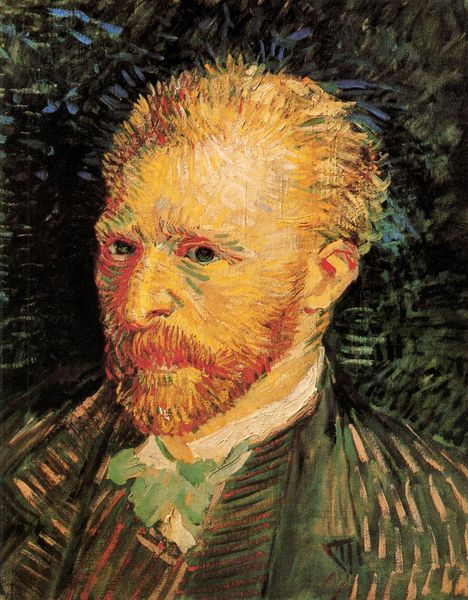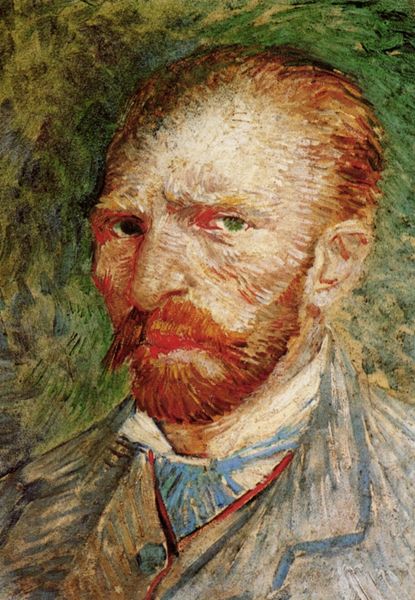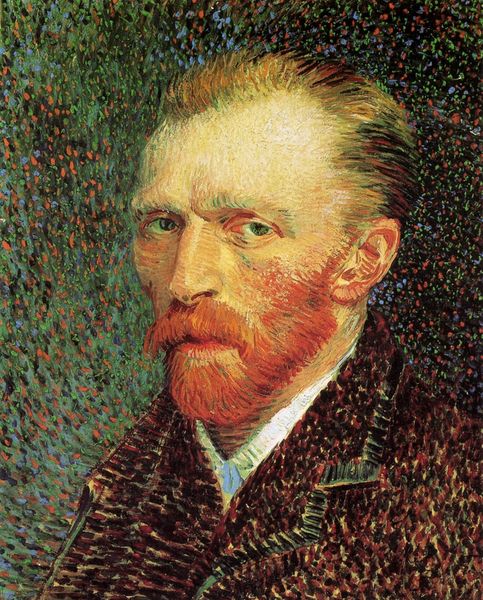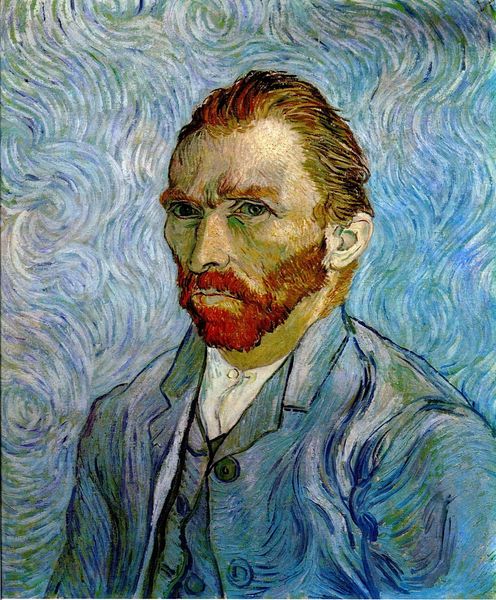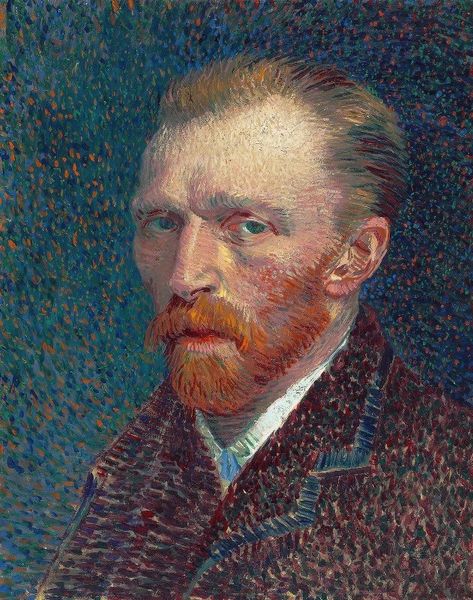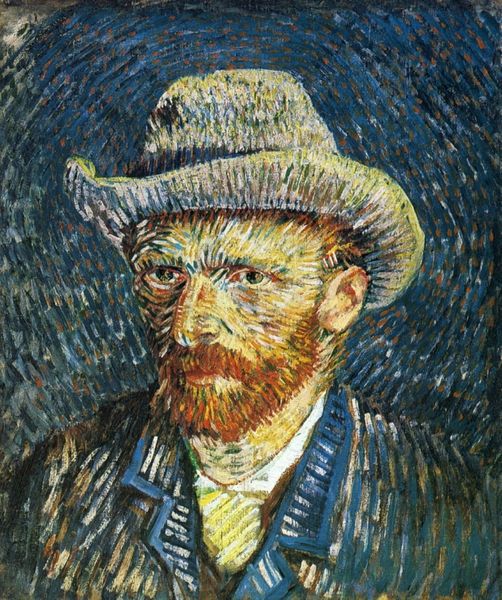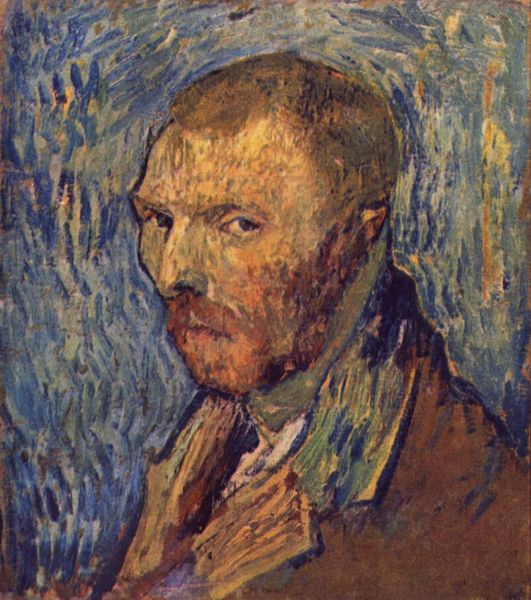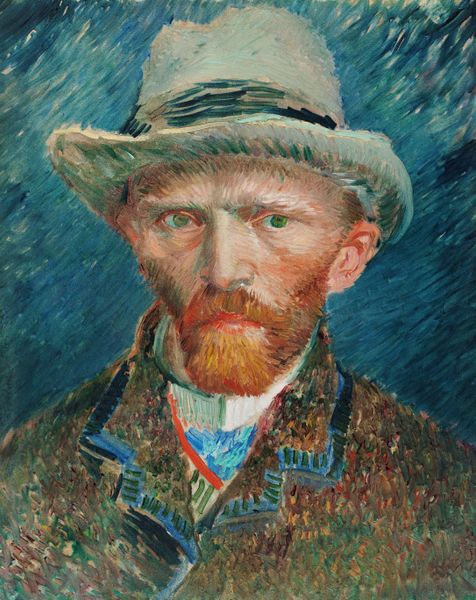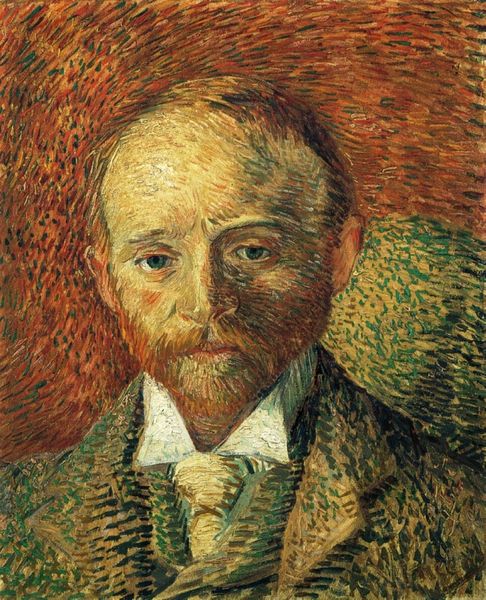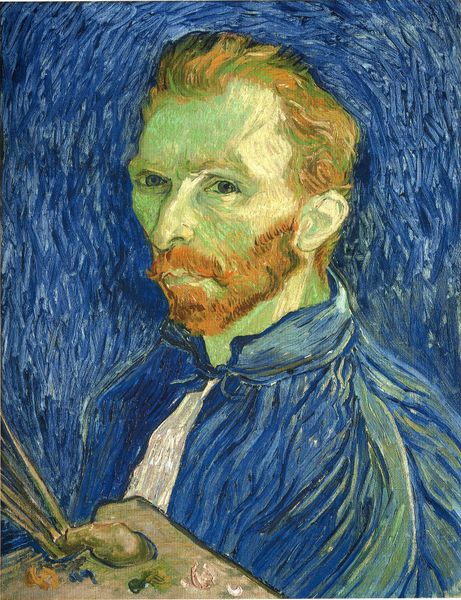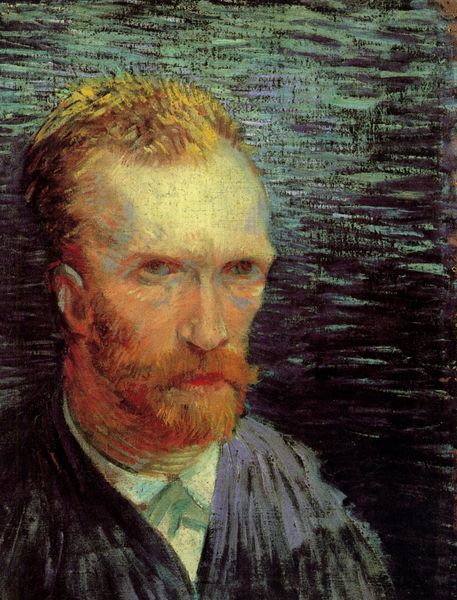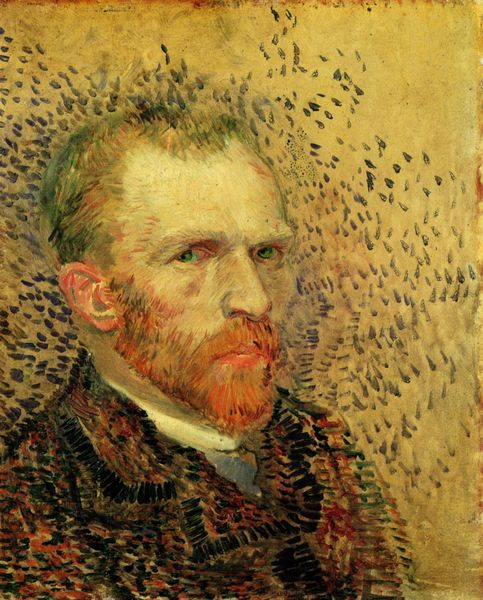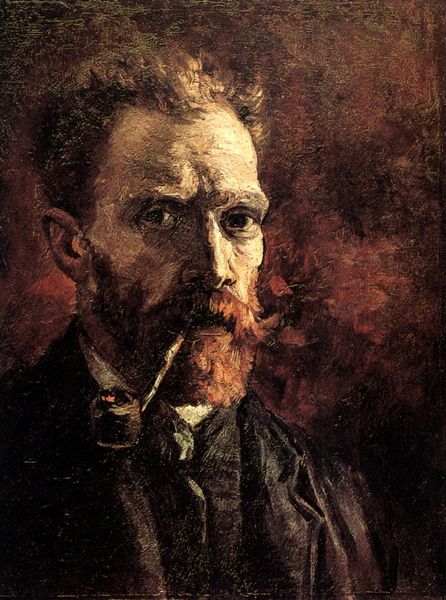
painting, oil-paint, impasto
#
portrait
#
self-portrait
#
painting
#
oil-paint
#
oil painting
#
impasto
#
post-impressionism
#
modernism
Copyright: Public domain
Curator: Welcome. Here, we have Vincent van Gogh's "Self-Portrait," created in 1888. Note the intensity of his gaze, wouldn't you say? Editor: Immediately, I’m drawn to the tangible presence of the paint itself. Thick, churning strokes build up a surface that’s as much sculpture as image, isn’t it? Curator: Precisely. Van Gogh's application of impasto is not merely representational. The visible brushwork carries as much meaning as the subject itself. Consider the relationship between form and content, how the emotional turbulence manifests in the paint’s texture. Editor: Absolutely. You see the labor right there in front of you. And I wonder, looking at it now, if his method of painting – those swirls, the layering – offered a kind of solace, a rhythm amidst internal chaos. How did the commodification of these portraits affect their cultural capital and recognition posthumously, given the artist's background and artistic formation? Curator: Intriguing question. The brushstrokes, the swirls you mention, can be seen as visual metaphors, externalizing internal psychological states. His post-impressionist approach allowed for a break from mimetic representation, emphasizing instead subjective expression. Observe, for instance, how complementary colors—the blues and oranges—create vibrancy. Editor: Right. The very stuff of the painting becomes a tool for expression beyond just visual likeness. Consider, too, the quality of pigments available to Van Gogh, and the environments in which he worked: Did these conditions limit his creativity or enhance the paintings' perceived cultural worth later on? Curator: That's an astute point. His use of colour has much to do with expressing his individual reaction, his subjective feelings in front of his subject, here, himself. These coloristic devices become a key expressive instrument, quite apart from their mimetic functions. Editor: Considering Van Gogh’s struggle to support himself during his lifetime, it is powerful to realize that the very materiality of these paintings — oil on canvas — is now a global commodity, the work of his hands vastly outweighing its initial material and societal cost. Curator: An essential point in our understanding of this striking and compelling self-portrait. Editor: Indeed. The history of the materials is not a negligible one.
Comments
No comments
Be the first to comment and join the conversation on the ultimate creative platform.
